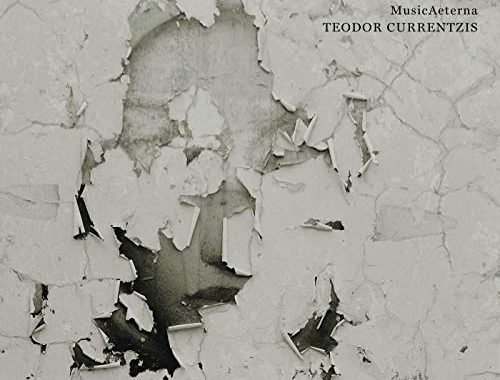GRAMOPHONE Review: There’s A Place For Us – Nadine Sierra, Royal Philharmonic Orchestra/Spano
 Why does everything nowadays have to be marketed with an angle, a message? There are no more recital discs, just albums. That’s a way of connecting the classical and pop worlds – I see that. But do we really have to keep repeating the mantra that Opera is for everyone even if most of the numbers on the ‘album’ in question are songs or show tunes? Nadine Sierra is a young American lyric soprano of Puerto Rican and Portuguese extraction and in times when diversity is a hot topic I can see why she would be encouraged to send the message of ‘inclusiveness’ with this her first (?) solo recording. The liner note (by one Aaron Grad) is peppered with ‘right-on’ quotes about universality of music and its power to transcend social and racial divides, to heal and to unite. Very Bernsteinian ideals (he features heavily in the collection). But an accompanying biography would have been nice, too, if only to give us more of a flavour of what this young artist has been up to thus far in her career.
Why does everything nowadays have to be marketed with an angle, a message? There are no more recital discs, just albums. That’s a way of connecting the classical and pop worlds – I see that. But do we really have to keep repeating the mantra that Opera is for everyone even if most of the numbers on the ‘album’ in question are songs or show tunes? Nadine Sierra is a young American lyric soprano of Puerto Rican and Portuguese extraction and in times when diversity is a hot topic I can see why she would be encouraged to send the message of ‘inclusiveness’ with this her first (?) solo recording. The liner note (by one Aaron Grad) is peppered with ‘right-on’ quotes about universality of music and its power to transcend social and racial divides, to heal and to unite. Very Bernsteinian ideals (he features heavily in the collection). But an accompanying biography would have been nice, too, if only to give us more of a flavour of what this young artist has been up to thus far in her career.
Her choices are individual and intriguing. There is Villa-Lobos – the familiar Aria from Bachianas Brasileiras No 5 along with two other beautiful and less familiar songs – the Argentinian composer Osvaldo Golijov also features along with Americans Ricky Ian Gordon and Christopher Theofanidis – a new name to me – whose opera The Cows of Apollo apparently featured a break-out role for Sierra. ‘Maia’s Aria’ from that opera certainly makes a dramatic and intense impression – a kind of eleven o’clock number towards the climax of this recital. But it also highlights a failing evident throughout the selections: words. Sierra’s bright and appealing soprano has a great facility for brilliance and the coloratura pyrotechnics in numbers like Anne Truelove’s aria ‘No Word from Tom’ from Stravinsky’s The Rake’s Progress and ‘Glitter and Be Gay’ from Bernstein’s Candide clearly hold no fears for her. But even where words are audible (and too many aren’t) she makes too little of them. Not just their sense and sentiment but their sound too. I don’t get much here beyond a rather generalised respect for them.
She clearly has no idea how to convey the comic irony of Cunegonde’s subverted ‘jewel song’, failing to use the coloratura to convey her lust for the intoxication of sparkly things and, in the central ‘melodrama’ the enjoyment of her misery. Nor does she seem to connect with the sentiments of Alan Jay Lerner’s marvellous lyric for the big ballad from Bernstein and Lerner’s disastrous 1600 Pennsylvania Avenue ‘Take Care of This House’. I’m sure she appreciates the metaphor (the White House as a symbol of democracy – those were the days – and ‘the hope for us all’) but communicating it in a way that doesn’t sound merely ‘arch’ appears to elude her. She has an exceptionally telling low register for a lyric coloratura but she fails to exploit its potential in numbers like this. It’s all a bit one colour.
In short, I enjoy the sound she makes in numbers like the two gorgeous Ricky Ian Gordon settings – particularly ‘Will There Really Be A Morning’ (Emily Dickinson) but even where she is singing in Spanish in ‘A Julia De Burgos’ – Bernstein’s feisty setting of the poet’s hymn to womanhood from Songfest (a shrewd choice) it could do with even more attitude. It doesn’t help that the accompaniments from the RPO under Robert Spano are so nondescript.
Her closer is the dazzling Anne Truelove aria from Stravinsky’s The Rake’s Progress which has me thinking back to Dawn Upshaw’s debut recital. Sierra could learn a lot by simply listening to what Upshaw did back then with the text. Even so, just before the brilliant cabaletta there’s the line ‘O God, protect dear Tom, support my father, and strengthen my resolve’ where Sierra pointedly uses her chest register to flesh out that final word – and in that isolated moment you recognise the potential of what you’ve been missing.
You May Also Like

A Conversation With ERIC WHITACRE
02/09/2010
GRAMOPHONE Review: Mahler Symphony No. 6 – MusicAeterna/Currentzis
02/01/2019

